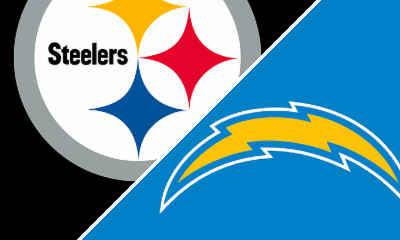Business
Trump’s threats against late-night TV could spell more trouble for advertisers

A sign is displayed outside the El Capitan Entertainment Centre in Hollywood where the “Jimmy Kimmel Live!” show will be recorded on the first night the show will return to the ABC lineup on September 23, 2025 in Los Angeles, California.
Mario Tama | Getty Images
Late-night television has come under fire in recent months. That could leave advertisers and media companies, already clinging to what’s left on live TV, with an even smaller pool of options.
The recent upheaval in late-night programming — namely the cancellation of “The Late Show with Stephen Colbert” and the temporary suspension of “Jimmy Kimmel Live!” — has shown a spotlight on ratings and revenue for late-night standouts and spurred questions of political influence.
President Donald Trump, aggressively vocal about both Colbert’s and Kimmel’s bad fortune, has called for late-night shows on NBC hosted by Jimmy Fallon and Seth Meyers to be next on the chopping block.
The result is not just uncertainty for viewers, TV executives and show staffs, but a pall over an advertising category that’s long been a staple of live TV.
“Reaching a lot of people who are engaged because it’s live TV — or live-to-tape — is really important, and when you think about it from the media company’s perspective … the live moments are live sports on most given nights, the nightly news and late-night talk shows. That’s all you have,” said Kevin Krim, CEO of ad data firm EDO.
“To the people who think late night doesn’t matter, they’re not thinking about the economics and the goals and the incentives of both the advertisers and the media companies. They’re ignoring some of the strategic value of the ecosystem,” he added.
When Disney’s ABC pulled “Jimmy Kimmel Live!” off the air in September, it was unclear for days if or when the program would return. While Disney reinstated Kimmel less than a week later, more than 20% of the country still couldn’t watch the show for three additional days as two major broadcast station owners preempted the content.
Colbert’s show will end next year after CBS parent Paramount announced in July it wouldn’t renew the program, citing financial considerations. The company has yet to reveal plans to fill the timeslot or give it back to the affiliate network owner.
The fervor around Colbert’s upcoming cancellation caused a temporary ratings surge, and Kimmel’s suspension led the show to rake in millions of viewers upon its return — way above the average and a missed opportunity for advertisers in the markets where Kimmel was preempted.
Late-night draw
Traditional TV viewership has decreased as the audience opts for streaming. But live content still garners the biggest ratings, which includes late-night talk shows.
As a result, late-night shows remain a valuable time slot for advertisers, especially for a younger demographic.
“Late-night may not draw the same mass audiences it once did, but the viewers who tune in are highly intentional. For advertisers, that makes the space less about sheer scale and more about reaching a consistent, engaged community,” said Julie Clark, longtime ad industry executive and current senior vice president of media and entertainment at TransUnion.
“Jimmy Kimmel Live!” was considered among the top 10 of ABC’s best vehicles for advertising reach, with the show delivering 2.5% of the network’s total ad exposures, or 11.8 billion national TV impressions, according to ad measurement firm iSpot.
According to EDO, in order to generate as much ad impact as one ad in the late-night comedy broadcast programs — that’s Kimmel, Fallon, Meyers and Colbert — advertisers would need to air, on average, about four spots across competitive late-night programming this year. In this case, competitive late-night programming means everything aired on broadcast and cable TV, excluding the late-night hosts, during these time slots.
Brands launching new products still get their best success from live TV commercials, according to ad industry executives.
But advertisers have begun to cut back on ad spending in the face of macroeconomic headwinds and trade uncertainty. Recently, eMarketer and the Interactive Advertising Bureau each released reports projecting a pullback in ad spending, not just for TV but also digital and streaming, due to higher costs for companies brought on by tariffs.
As advertisers trim spend and Trump puts late night in his crosshairs, the costs of these TV programs are coming under the microscope.
Weighing the costs
Media companies’ priorities have shifted to building out their streaming platforms in a push for profits. Pay TV networks still make the majority of the profits, but that number is shrinking.
“Generally speaking, viewership of late night talk shows has been low compared to what they once were, but it’s less about a specific host or show and more about the shift in how people consume television,” said Vicky Chang, vice president of media at Tatari, a TV ad platform.
Paramount said in July its move to end Colbert was “purely a financial decision against a challenging backdrop in late night.” Kimmel’s show will face another test when his contract comes up in 2026.
“Late-night TV and daytime morning shows used to be two of the most profitable areas of TV, more so than sports because of the big sports rights fees. Networks typically made a huge amount of money,” said Jonathan Miller, longtime senior media industry executive who serves as CEO of Integrated Media. “Initially late-night shows weren’t very expensive, but the costs have gone up. But ratings have declined so it’s less profitable – and hosts still want a lot of money.”
The focus for media companies is increasingly on content that guarantees big live audiences — by and large, live sports. This has led to hefty spending on sports rights over other kinds of content.
Weeks after Colbert said this season would be his final, the newly merged Paramount Skydance announced a $7.7 billion media rights deal with UFC. ABC parent Disney and NBCUniversal last year signed a new media rights deal with the NBA worth $77 billion over 11 years.
Media companies are also facing the daunting cost of rising political pressure.
Trump and Federal Communications Commission Chair Brendan Carr have ramped up scrutiny of media companies during the president’s second term in office.
Last year ABC News agreed to pay $15 million toward Trump’s presidential library to settle a lawsuit over comments by TV anchor George Stephanopoulos that Trump called defamatory. And this summer Paramount agreed to pay $16 million to settle a lawsuit over the editing of a CBS “60 Minutes” interview with then-Vice President Kamala Harris.
Weeks after that settlement, Paramount and Skydance won federal approval for their long-awaited merger.
Colbert later referred to Paramount’s settlement as a “big fat bribe” during one of his show’s opening monologues. Soon after, the company announced the future end date of the late-night show.
Disney’s suspension of Kimmel came on the heels of comments by the FCC’s Carr that suggested affiliate ABC stations could lose their broadcast licenses if they aired content that was against the “public interest.” Trump made a similar threat regarding the broadcast networks that he said are “against” him.
Disclosure: Comcast is the parent company of NBCUniversal, which owns CNBC. Versant would become the new parent company of CNBC upon Comcast’s planned spinoff of Versant.
Business
Cloud infra deal: Microsoft partners with Anthropic and Nvidia; $45 billion cloud deal to reshape AI infrastructure – The Times of India

Microsoft on Tuesday announced a sweeping cloud infrastructure partnership with artificial intelligence firm Anthropic and chipmaker Nvidia, marking a significant realignment in the technology giant’s AI alliances as it moves further away from exclusive dependence on OpenAI, AP reported.Anthropic, the developer of rival chatbot Claude, said it will commit to purchasing $30 billion worth of computing capacity from Microsoft’s Azure cloud platform under the new agreement. As part of the same partnership, Nvidia will invest up to $10 billion in Anthropic, while Microsoft will invest up to $5 billion in the San Francisco-based company.The joint announcement from Anthropic CEO Dario Amodei, Microsoft CEO Satya Nadella and Nvidia CEO Jensen Huang was made just before the opening of Microsoft’s annual Ignite developer conference.Microsoft had long served as OpenAI’s exclusive cloud provider, but that arrangement began to shift earlier this year. While the two companies continue to collaborate, OpenAI has expanded its cloud strategy by striking major deals with Oracle, SoftBank and other chipmakers and data-centre operators to secure additional computing capacity.The latest move strengthens Microsoft’s position in the rapidly intensifying AI infrastructure race and gives Anthropic access to one of the world’s largest cloud ecosystems as competition with OpenAI accelerates.
Business
Property Prices Have Surged 500% In These Religious Cities, NCR Realtors Enter The Market

Last Updated:
Bolstered by the popularity of Premanand Maharaj and the Banke Bihari Temple Corridor, Varanasi’s land prices have gone from Rs 20,000 per 900 sq ft to Rs 1 crore in just 4 years
Ayodhya land prices increased 50-100% due to Ram Temple construction.
In a striking shift from the traditional focus on metro and tier-1 cities, the real estate landscape is witnessing a new trend as pilgrimage and religious cities are becoming prime destinations for homebuyers and investors. Cities such as Ayodhya, Varanasi, Prayagraj, Vrindavan, and Haridwar are seeing a surge in property demand, with some areas experiencing price jumps of up to 500%.
Experts attribute this boom to a combination of religious tourism, major infrastructure projects, and increased economic activity in these cities. “The construction of the Ram Temple in Ayodhya, the Kashi Corridor in Varanasi, and major festivals like the Maha Kumbh have attracted a growing number of devotees,” said a property analyst. He said that the rise in footfall is directly influencing real estate, with demand for second homes, retirement properties, and serviced apartments at an all-time high.
Vrindavan: Prices Jump 500%
Vrindavan has emerged as one of the most expensive religious real estate markets in the country. The city’s growing prominence, bolstered by the popularity of Saint Premanand Maharaj and the Banke Bihari Temple Corridor, has seen land prices escalate from Rs 20,000 per 100 square yards to over Rs 1 crore in just four years in approved residential projects like Rukmini Vihar. Developers such as Omaxe, Basera, and Amaiya are actively launching high-rise residential and commercial projects, including Omaxe Krishna Crest, Omaxe Eternity, and Omaxe Bettgather Courtyard Mall, catering to the surge in demand.
Ayodhya: Land Prices Soar 50-100%
Ayodhya has witnessed a dramatic rise in property rates since the construction of the Ram Temple started. Land surrounding the temple has seen prices climb by 50-100%, prompting developers to plan theme-based townships and modern residential projects. Local developer Ayodhya Home & Soul Developers is reportedly preparing to launch a significant residential project in the city. Improved infrastructure and government-backed initiatives are further enhancing returns, making Ayodhya a hotspot for investors and homebuyers alike.
Prayagraj: From Industrial Hub to Real Estate Attraction
The Naini area in Prayagraj is rapidly transforming, driven by its emergence as both an industrial and educational hub. Developers, including Omaxe, are establishing large residential projects such as Omaxe Sangam City and Omaxe Ananda, shifting the market from traditional low-rise housing to high-rise developments.
Dehradun: Penthouses and Luxury Apartments in Demand
In Dehradun, Sahastradhara Road and Rajpur Road, along with areas near Tapkeshwar Mahadev and Drone Cave Temples, are witnessing growing real estate interest. Projects like Sikka Kimaya Greens and Excentia Tatva are introducing luxury apartments, high-rises, and penthouses, merging modern amenities with serene surroundings. Excentia Tatva, in particular, is being promoted as the city’s first uber-luxury residential experience.
Varanasi: A Rising Hub for Real Estate Investment
Varanasi continues to attract Shiva devotees and investors alike, with both residential and commercial properties seeing heightened interest. Improved connectivity and growing religious tourism are factors driving the city’s rising property prices.
Why Religious Cities Are Gaining Momentum
Several factors underpin this new trend:
- Religious tourism is seeing record growth, drawing lakhs of devotees annually.
- Enhanced highway, rail, and air connectivity makes these cities more accessible.
- Rising demand for retirement homes and second residences is fueling development.
- Branded developers from Delhi-NCR and other major cities are entering these markets.
- Government support and infrastructure projects are boosting investor confidence.
As spiritual hubs evolve into real estate hotspots, these cities are no longer just centres of faith, they are emerging as strong, high-return investment destinations.
November 18, 2025, 20:04 IST
Read More
Business
Govt To Notify New ITR Forms By January 2026, Implement Them From April

New Delhi: The Income Tax Department will notify new income‑tax return (ITR) forms and related rules under the streamlined Income Tax Act, 2025, by January, and the updated regulations be effective from April 1, 2026. The updated regulations will mark the transition from the nearly six-decade old Income Tax Act of 1961, multiple reports cited Central Board of Direct Taxes chairman Ravi Agrawal as saying.
Agrawal said the department is designing the new forms keeping it simple and easy to comply and adapt to. “We are in the process of designing the new forms and rules, and our aim is to notify them by January so that taxpayers have adequate time to adjust their systems and processes,” he was quoted as saying at the inauguration of Taxpayers’ Lounge at the India International Trade Fair (IITF) here.
Analysts said that the current framework of the rules is largely drafted in traditional legal language making it hard to understand and interpret. They said new rules should use simplified language, include illustrations for valuation rules, and align form structure with revamped TDS provisions under the new Income-tax Act 2025.
The Taxpayers’ Lounge offer a wide range of assistance and interactive resources that help with PAN/e‑PAN applications, Aadhaar–PAN linking and resolving PAN-related queries. Further, it will offer support for e‑filing, Form 26AS queries, TDS issues, guidance on international taxation, faceless assessment and appeals, and and other online filing issues.
Agrawal added that the Income Tax Department will release outstanding tax refunds by December. “We have analysed and found that some wrong refunds or deductions were being claimed so there is scrutiny, but we hope to release the remaining refunds by this month or December,” he added.
-

 Tech1 week ago
Tech1 week agoFrom waste to asset: Turning ethanol production CO₂ into jet fuel
-

 Tech3 days ago
Tech3 days agoNew carbon capture method uses water and pressure to remove CO₂ from emissions at half current costs
-

 Politics5 days ago
Politics5 days agoBritish-Pakistani honoured for transforming UK halal meat industry
-

 Sports3 days ago
Sports3 days agoTexas A&M officer scolds South Carolina wide receiver after touchdown; department speaks out
-

 Business3 days ago
Business3 days agoThese 9 Common Money Mistakes Are Eating Your Income
-

 Tech1 week ago
Tech1 week agoSecurity flaws in portable genetic sequencers risk leaking private DNA data
-

 Sports1 week ago
Sports1 week agoSteelers vs. Chargers (Nov 9, 2025) Live Score – ESPN
-

 Fashion5 days ago
Fashion5 days agoAdidas & Patrick Mahomes expand NIL programme with Texas Tech athletes














